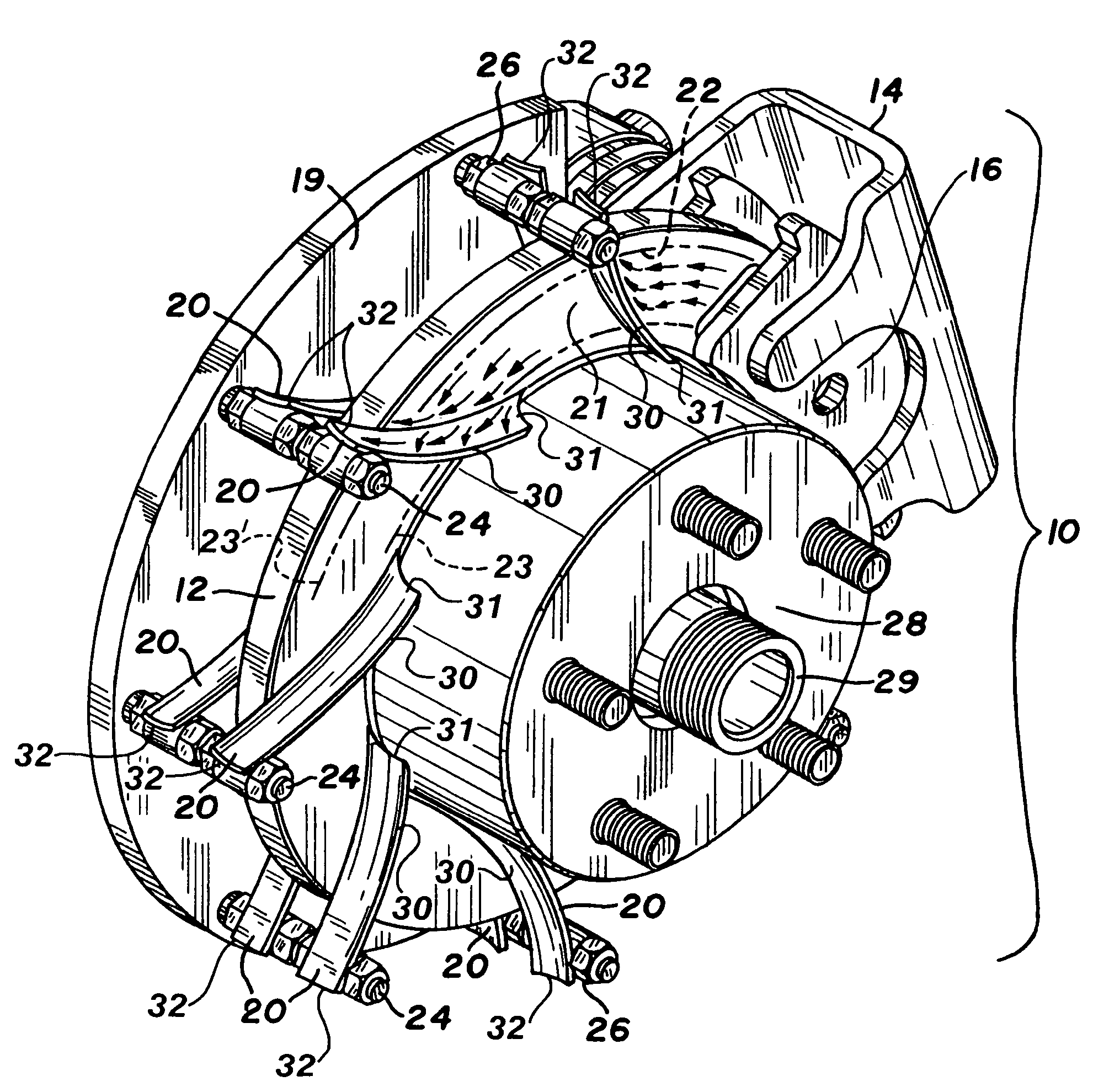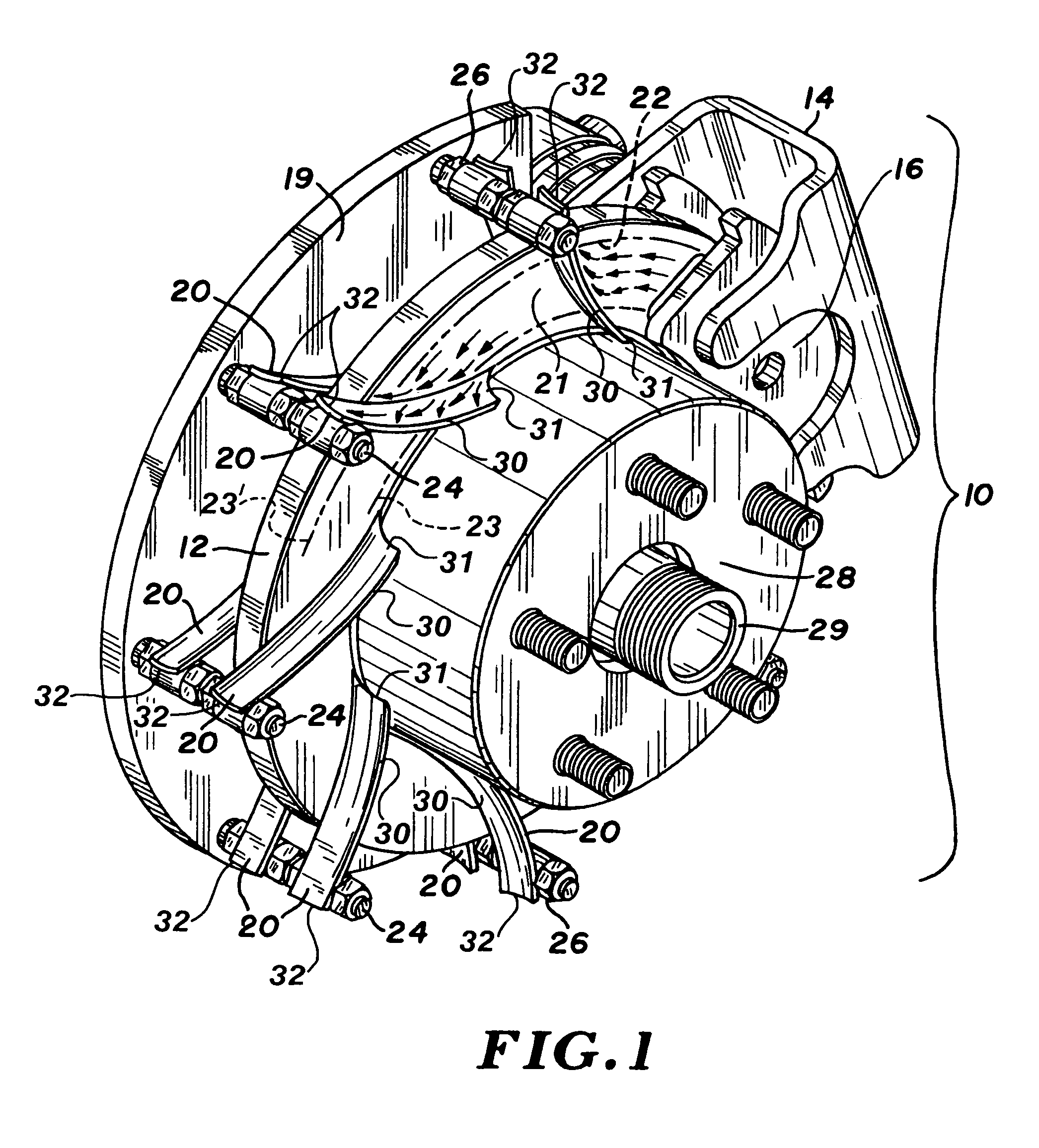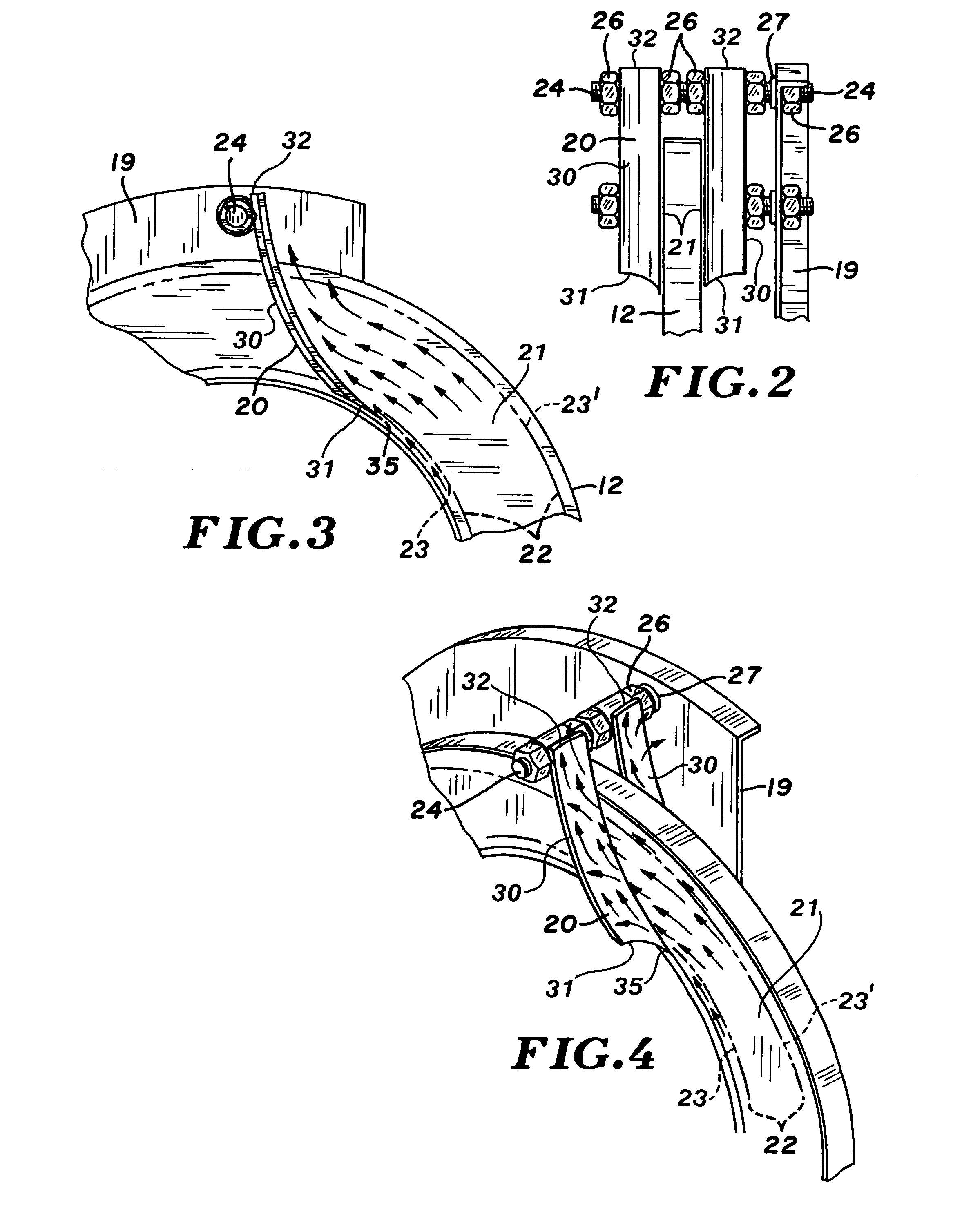Braking surface cooling assembly and brake performance enhancing methods
a technology of friction brakes and cooling assemblies, which is applied in the direction of friction actuated brakes, brake discs, transportation and packaging, etc., can solve the problems of reducing or diminishing kinetic energy, limiting the effectiveness of dispersing such thermal energy to the atmosphere, and the heat sink capacity of the assembly being the peak use limit factor, so as to reduce or diminish the function and role of the heat sink rotor, the effect of reducing or diminishing the weight of the rotor
- Summary
- Abstract
- Description
- Claims
- Application Information
AI Technical Summary
Benefits of technology
Problems solved by technology
Method used
Image
Examples
Embodiment Construction
[0041]Turning now to the drawings, in which similar components are designated by like reference numerals throughout the various FIGURES, a brake assembly is shown in FIG. 1 and generally designated by reference numeral 10. As shown, brake assembly 10 includes rotary braking member (rotor 12, for example), caliper 14, friction pad assemblies 16 and backing plate 19 (the term “backing plate” as used herein is intended to be interpreted in a comprehensive sense unless otherwise specifically signified, and accordingly is intended to refer to a variety of closely spaced components which are stationary relative to the rotational motion of the rotor and braking surface, including the mounting plates for the friction pads, that is, in this connection and by way of example, friction pads are frequently mounted upon and / or otherwise secured to the mounting plates).
[0042]The cooling assembly of this invention includes fluid guiding cooling vanes 20, shown in the FIGURES as being coupled to a m...
PUM
 Login to View More
Login to View More Abstract
Description
Claims
Application Information
 Login to View More
Login to View More - R&D
- Intellectual Property
- Life Sciences
- Materials
- Tech Scout
- Unparalleled Data Quality
- Higher Quality Content
- 60% Fewer Hallucinations
Browse by: Latest US Patents, China's latest patents, Technical Efficacy Thesaurus, Application Domain, Technology Topic, Popular Technical Reports.
© 2025 PatSnap. All rights reserved.Legal|Privacy policy|Modern Slavery Act Transparency Statement|Sitemap|About US| Contact US: help@patsnap.com



